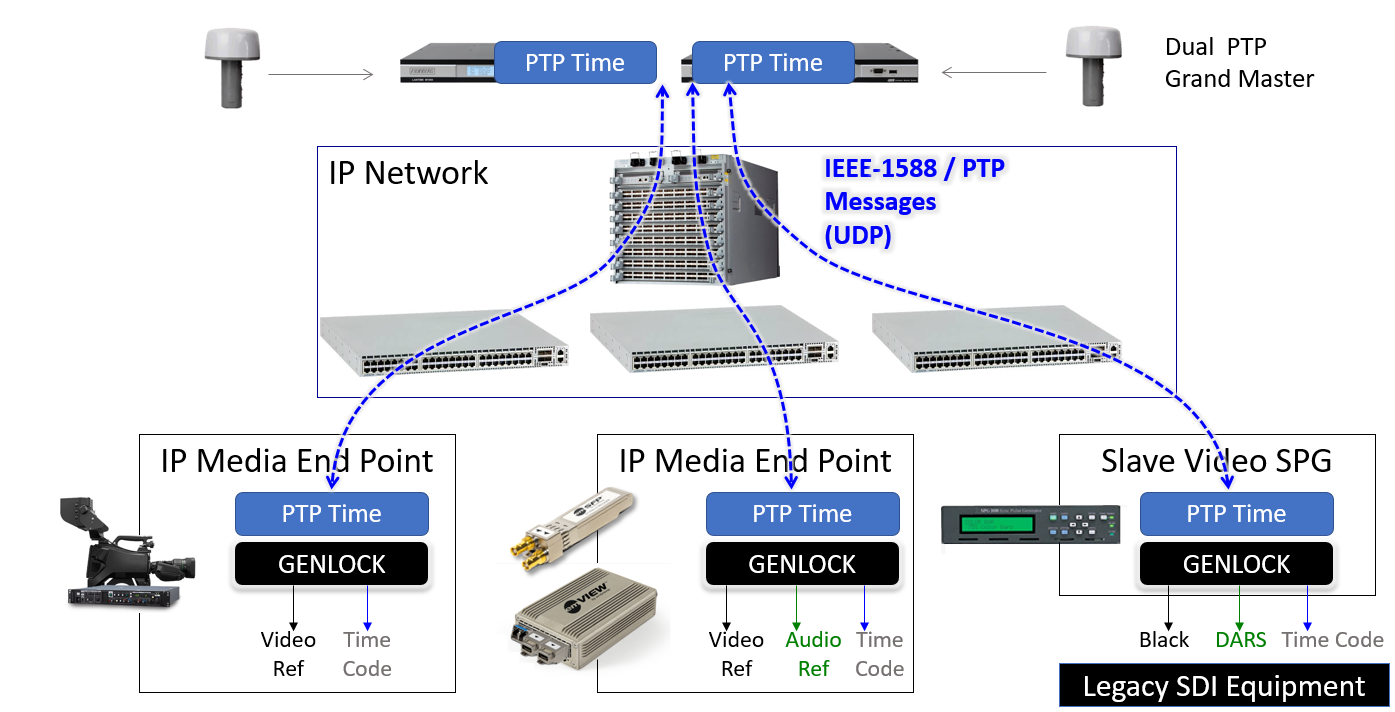It is always a complicated task to write a useful white paper which will relate to a REAL challenge for our customers. We briefly explain the PTP in the paper, but there were some hidden roadblocks we had to overcome to have a solid ST2110 system with ST2059. Embrionix team worked hard to achieve it and we are excited to share our experience won by deploying a major project in ST2110 + ST2059. If you like to setup a meeting with us, simply contact us at: info@embrionix.com
Introduction
This document explains the difference between transparent clock and boundary clock. It also explains that Boundary clock could scale easily compared to transparent clock. The first section is the definition of the precision time protocol (PTP) functionality, ST 2059-1 and ST 2059-2, transparent clock and boundary clock definition. The next section shows the IP broadcast center clocking scheme and which PTP clocking is better.

Figure 1. Video and Time Reference in an IP Media Facility (courtesy of Michel Proulx)
1. Definition
1.1 PTP functionality
The PTP is defined by the specification IEEE-1588. It is an algorithm that synchronizes the peripherals on the network with a common time reference. Before PTP, there was the network time protocol (NTP) which allowed systems to be synchronized within a few milliseconds of coordinated universal time (UTC). While the provided precision proved to be enough for basic transfer of time of day information, it is not enough for real-time applications such as audio and video. To improve accuracy, thus enabling real-time applications to utilize the Ethernet network, the Institute of Electrical and Electronics Engineers (IEEE) defined PTP...
For the complete white paper, please use the following link to download it:

